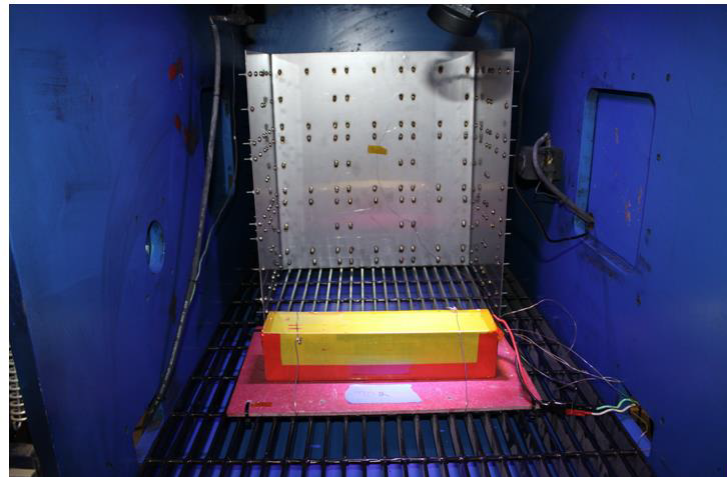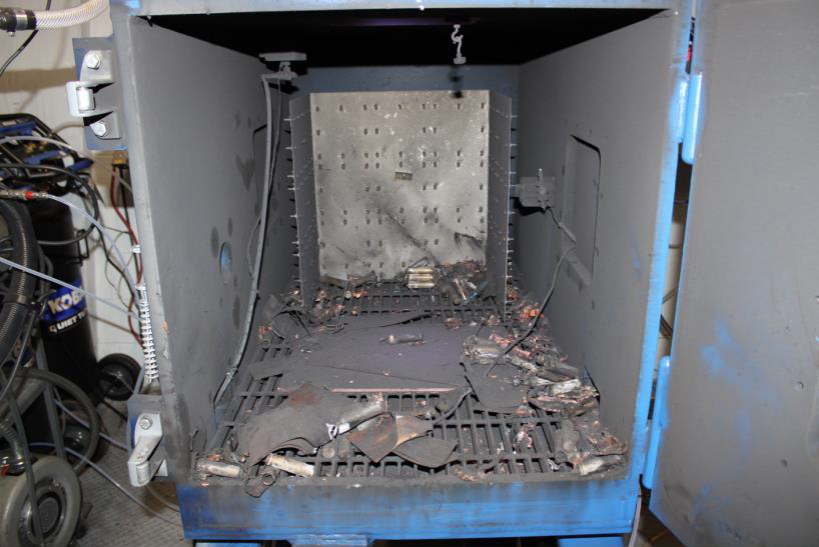TEEX Initiates Tests on First Responder PPE Exposed to Lithium-Ion Battery Fires

The challenges associated with responding to electric vehicle/energy storage system (EV/ESS) emergencies are constantly changing as these technologies continue to evolve and become more prevalent across the United States. Li-ion batteries are used in electric vehicles, energy storage systems, scooters, bicycles, hoverboards and many other consumer products.
The Texas A&M Engineering Extension Service (TEEX) recently initiated a series of tests to determine the contaminants produced by lithium-ion (Li-ion) battery fires and their impacts on first responders and their personal protective equipment (PPE). The tests were conducted by researchers at the Southwest Research Institute (SwRI) in San Antonio, Texas. SwRI researchers also measured the effectiveness of two different cleaning methods to remove the Li-ion battery emissions from the PPE.
During testing, researchers subjected the batteries to thermal runaway by overcharging and causing them to catch on fire. The tests were conducted in a blast chamber where swatches of first responder bunker gear and apparatus fabric and self-contained breathing apparatus straps were exposed to the byproducts of Li-ion battery fires. The tests measured 24 heavy metals and 75 semi-volatile organic compounds (SVOCs) resulting from the battery fires.
The tests concluded that Li-ion battery fires release highly toxic gases and particles that exceed the Occupational Safety and Health Administration (OSHA)-permissible exposure limits. High concentrations of lithium, nickel, cobalt, manganese and copper were detected during each Li-ion thermal runaway test, with lithium being the most dominant. The extreme emissions from the battery fires raise awareness of the human health and environmental risks associated with Li-ion battery fires.

The traditional National Fire Protection Association standard for water-based cleaning of the PPE removed about 99 percent of the metallic particles in the gear and the liquid CO2 cleaning method removed almost all of the metallic particles. However, some SVOCs remained in the gear after water-based cleaning, with cleaning efficiencies ranging from 21 percent to 92 percent, and several metals remained in the gear regardless of the cleaning method that was used.
“This series of tests provides information for the first responder community to help shape their response protocols, such as apparatus positioning and cleaning efficiencies, and to develop and adopt standard operating procedures for responding to Li-ion battery fires,” said Gordon Lohmeyer, TEEX assistant agency director for strategic initiatives and business strategy. “TEEX is committed to identifying safe and successful methods for responding to Li-ion battery fires.”
To read the full Lithium-Ion Battery Fires and Emissions Characterization report and view a summary video, visit: https://teex.org/ev-ess-current-practices/.
TEEX is hosting the second annual Electric Vehicle and Stored Energy Summit January 7-9, 2025, in College Station, Texas, which features some of the nation’s foremost experts to share the latest developments related to EV/ESS emergencies. To view the schedule of events and register, visit: https://teex.org/teex-electric-vehicle-and-stored-energy-summit/.
About TEEX
The Texas A&M Engineering Extension Service (TEEX) is an internationally recognized leader in emergency response training, workforce training and technical assistance. In 2023, TEEX trained more than 212,000 participants from every U.S. state and territory and 118 countries worldwide.
Major TEEX programs include Fire and Emergency Services, Infrastructure and Safety, Law Enforcement and Protective Services, and Business and Cyber Solutions. Additionally, through its National Emergency Response and Recovery Training Center (NERRTC), TEEX provides federally funded homeland security training and technical assistance for communities across the nation. The agency also sponsors the Texas A&M Public Works Response Team (TX-PWRT) and the Texas A&M Task Force 1 (TX-TF1) Urban Search and Rescue Team.
For more information, visit teex.org
Distributed by:
Texas A&M Engineering Extension Service
Vita Vaughn | Director of Marketing and Communications/CMO
[email protected]
Office: (979) 458-7726 | Cell: (979) 402-7810
